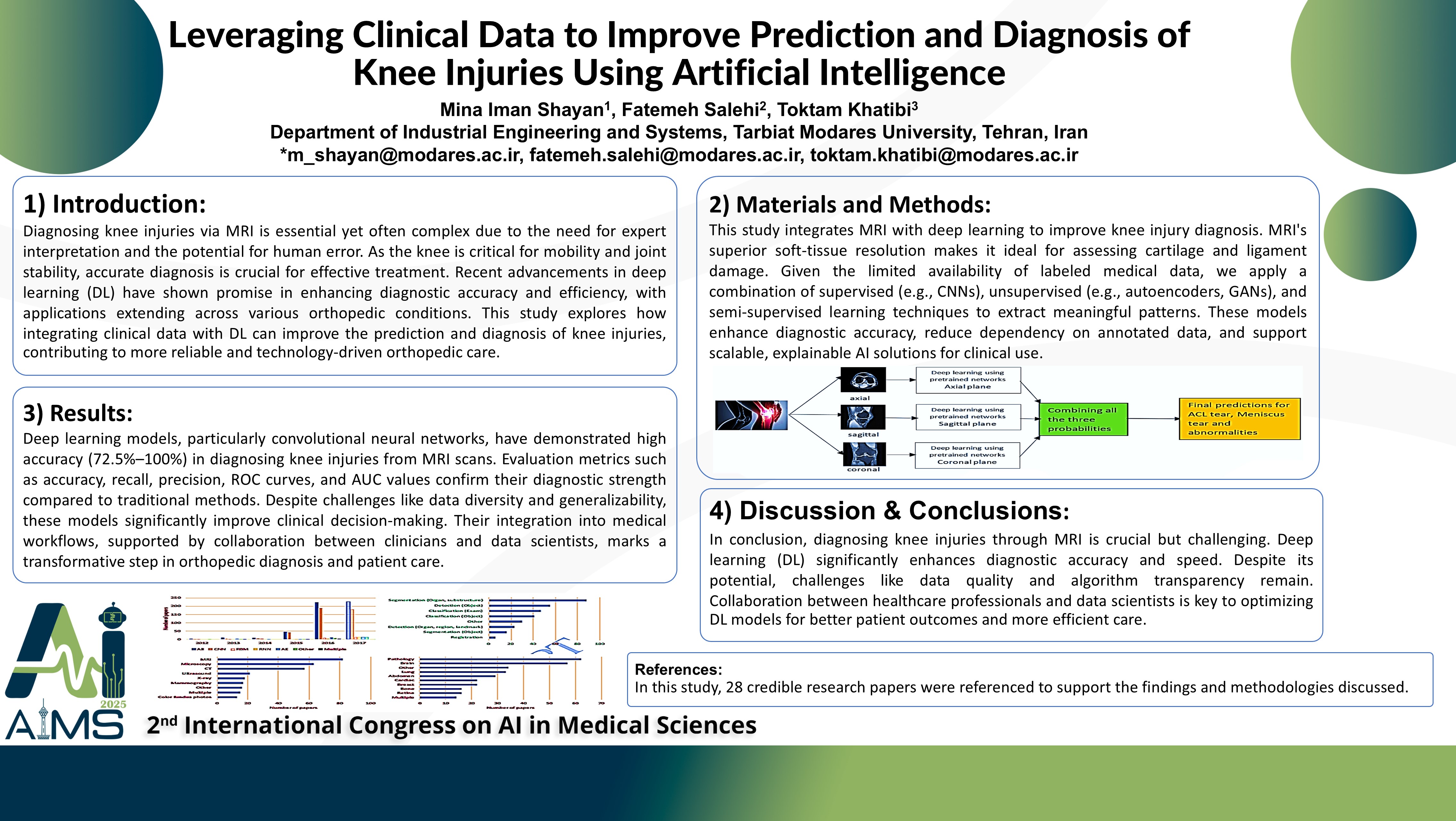بهرهگیری از دادههای بالینی برای بهبود پیشبینی و تشخیص آسیبهای زانو با استفاده از هوش مصنوعی
کد: G-1055
نویسندگان: Mina Iman Shayan *, Fatemeh Salehi ℗, Toktam Khatibi
زمان بندی: زمان بندی نشده!
برچسب: دستیار مجازی هوشمند
دانلود: دانلود پوستر
خلاصه مقاله:
خلاصه مقاله
Background and Aims: Knee injuries, especially those affecting the posterolateral corner (PLC) and lateral collateral ligament (LCL), are difficult to diagnose accurately. Traditional diagnostic methods such as physical examination and manual image interpretation often struggle with issues of accuracy and efficiency. The objective of this research is to explore the potential of deep learning techniques for automating the diagnosis of these injuries from knee MRI images. Specifically, this study aims to investigate how both supervised, unsupervised, and semi-supervised learning approaches can be used to improve model performance, reduce dependence on labeled data, and enhance the model's generalization capabilities across different cases and imaging variations. Methods: In this study, we explore different deep learning approaches, including supervised, unsupervised, and semi-supervised learning methods, to diagnose knee injuries. Supervised learning techniques rely on labeled data to train models that classify injuries, while unsupervised learning can help identify patterns in data without requiring labeled input. Semi-supervised learning combines both labeled and unlabeled data, helping to improve performance even when labeled data is scarce. These approaches aim to enhance the model's ability to detect and classify injuries in knee MRI images, improving both accuracy and efficiency. Results: The exploration of supervised, unsupervised, and semi-supervised learning approaches indicated that combining these techniques could lead to improved performance. While supervised learning provides high accuracy with labeled data, the integration of unsupervised learning can help the model uncover hidden patterns in the MRI images. Semi-supervised learning further optimizes the model, particularly in cases with limited labeled data. The results suggest that these combined methods could improve the model's diagnostic capability and generalize better across different cases and imaging variations. Conclusion: This study demonstrates the potential of deep learning techniques, including supervised, unsupervised, and semi-supervised learning, for automating the diagnosis of knee injuries such as PLC and LCL. By reducing reliance on labeled data and improving model performance, these methods could be integrated into clinical practice to help healthcare professionals diagnose knee injuries more accurately and efficiently, ultimately enhancing patient care.
کلمات کلیدی
Deep Learning, MRI Imaging, Knee Injuries,AutomatedDiagnosis,Data-DrivenAnalysis
